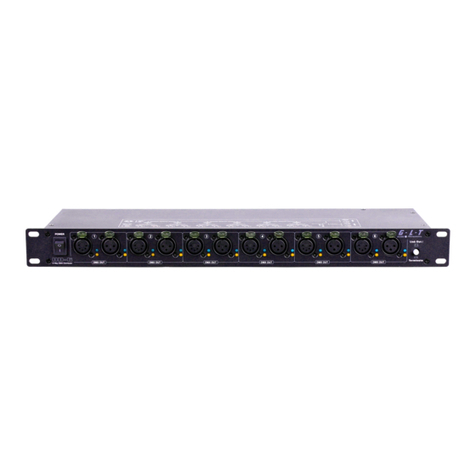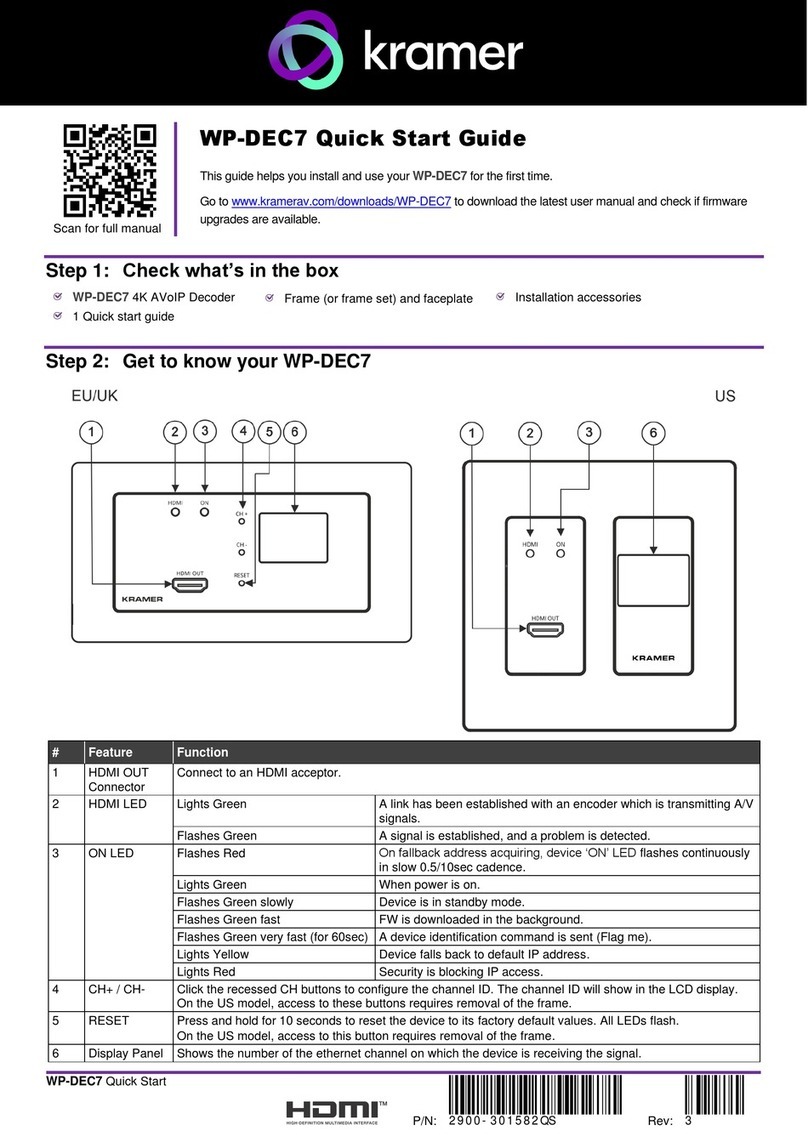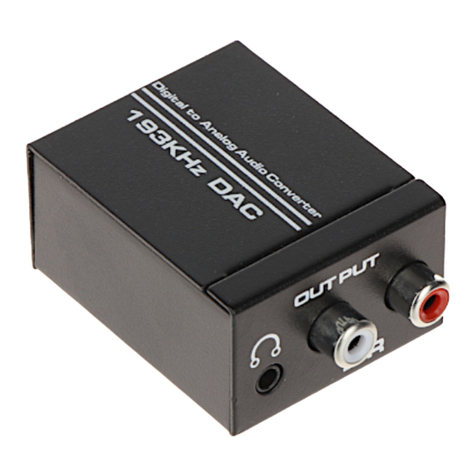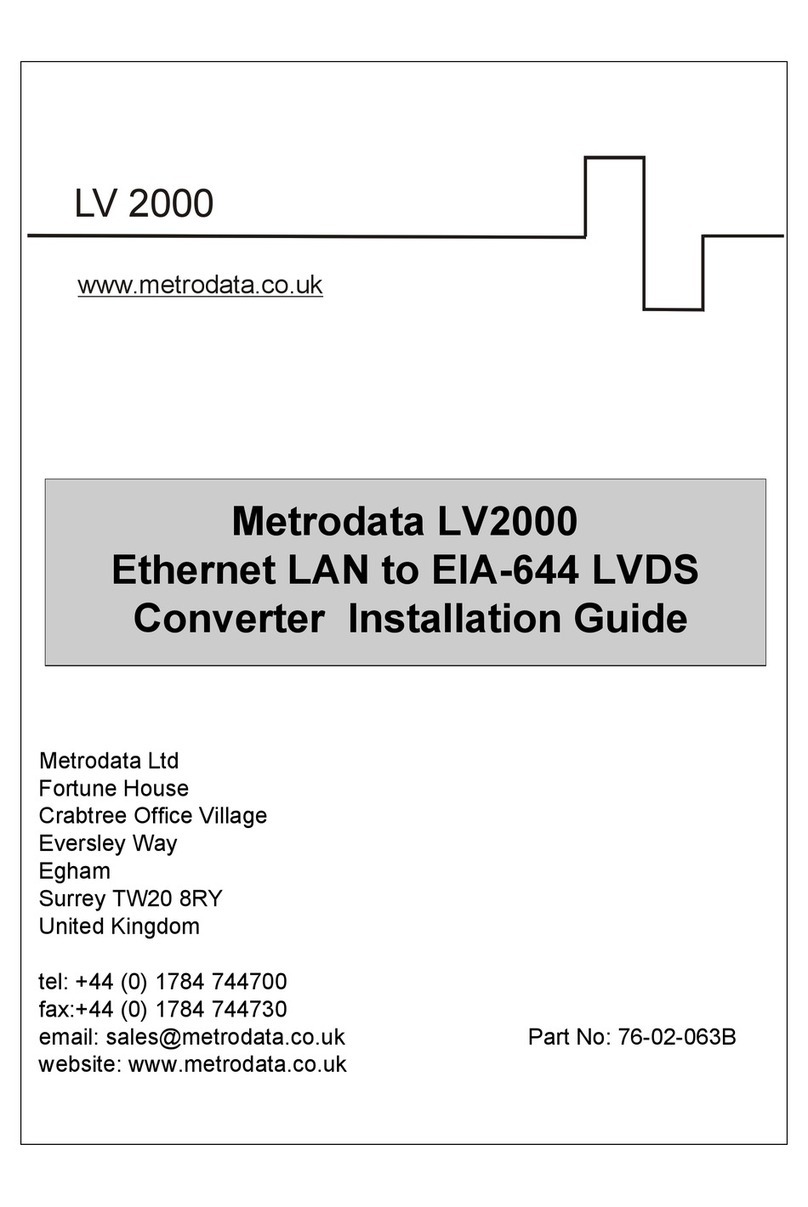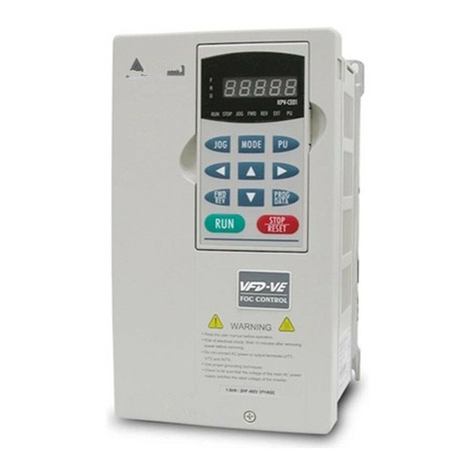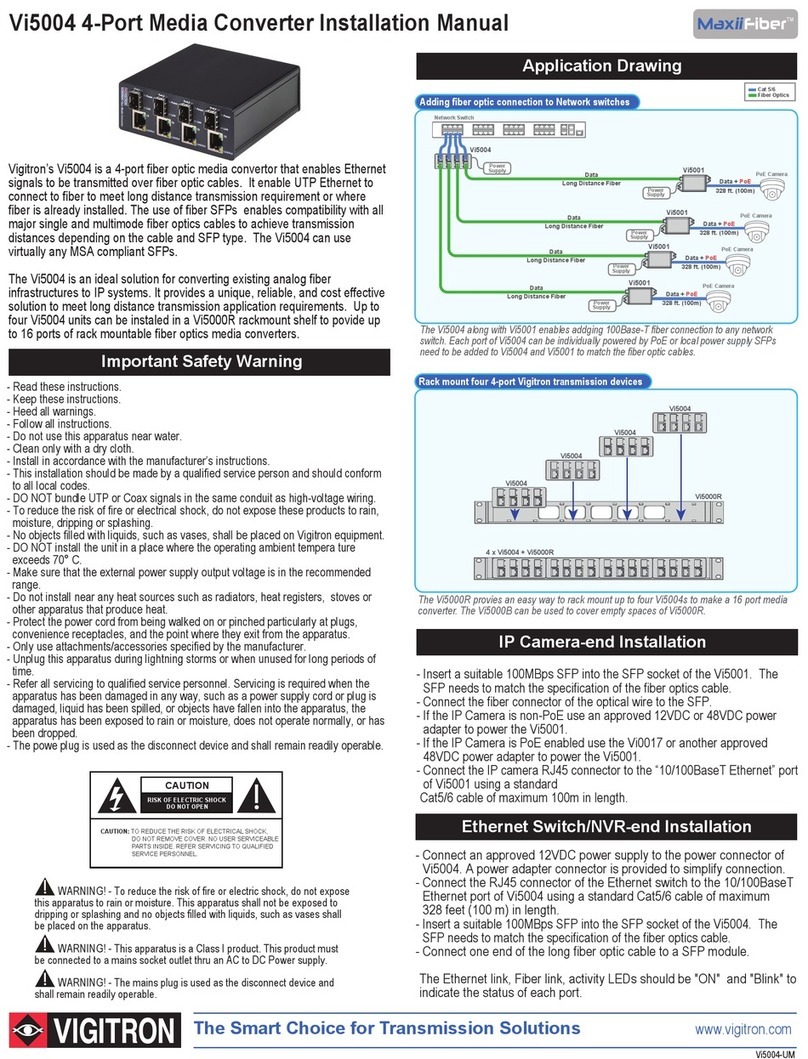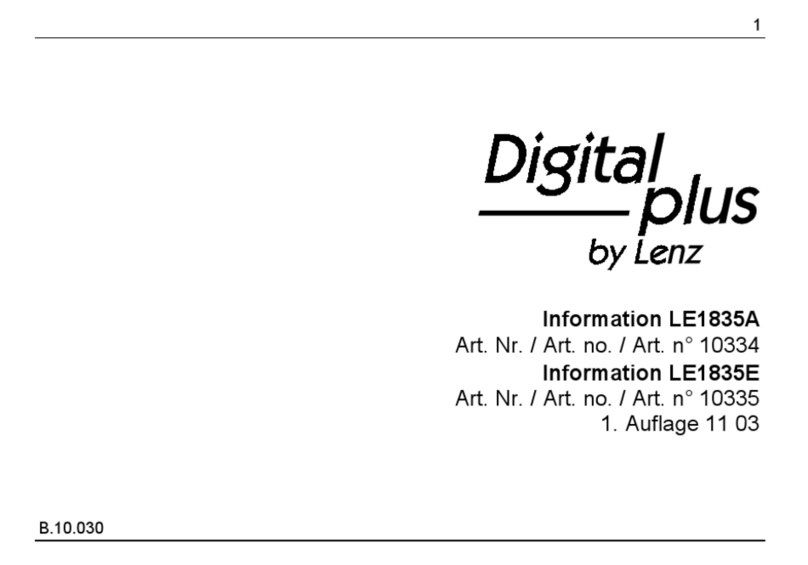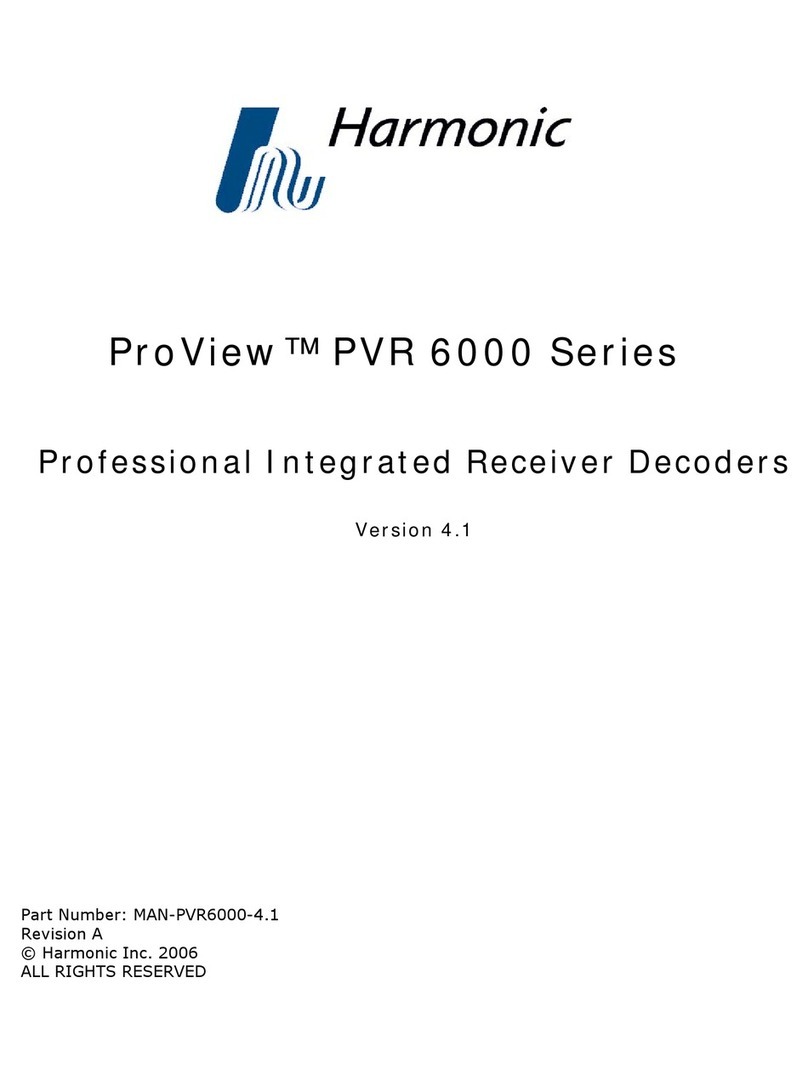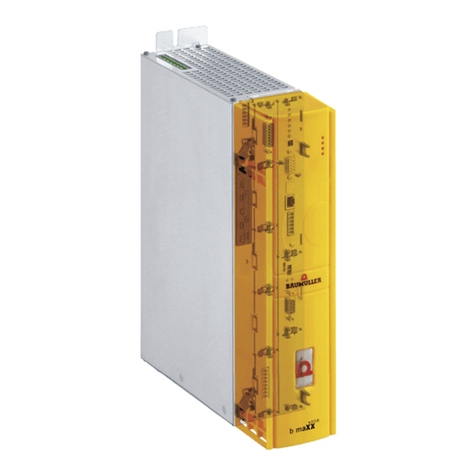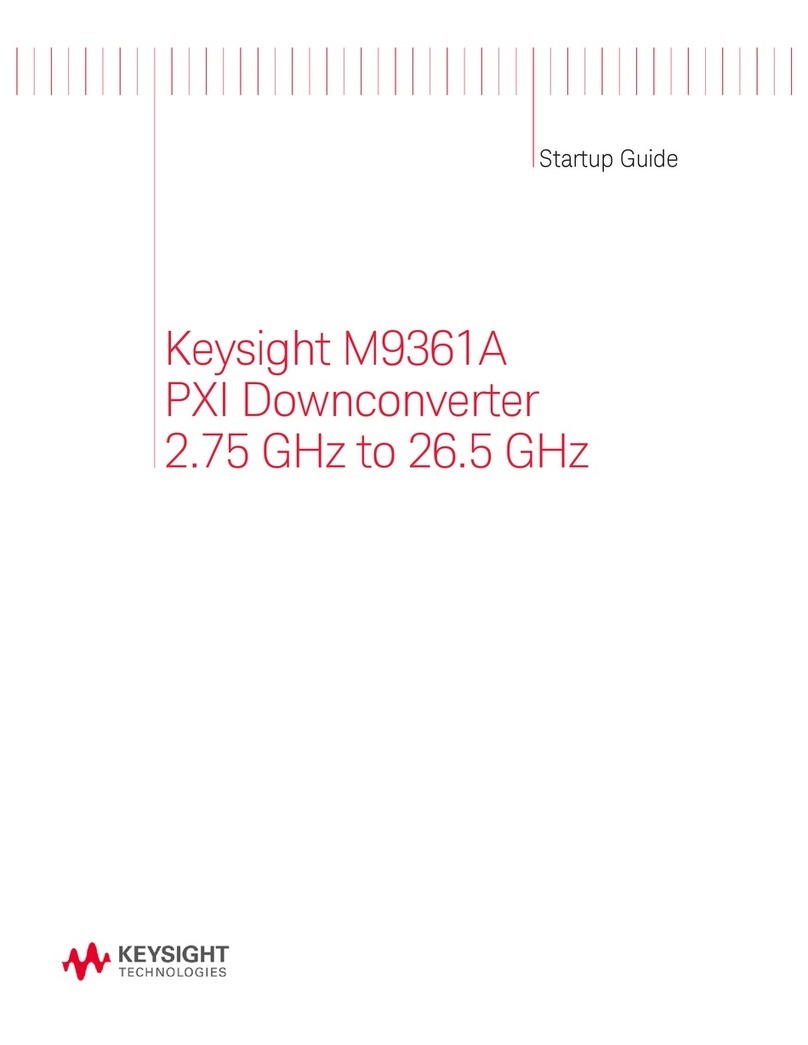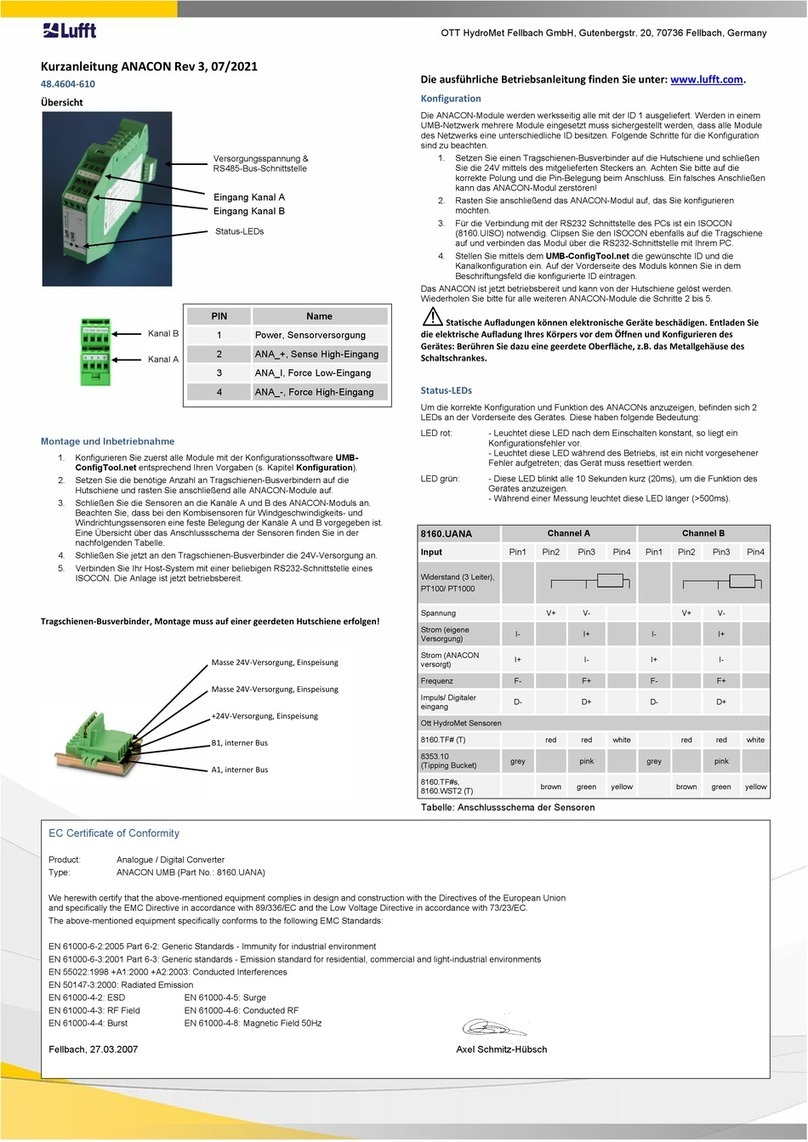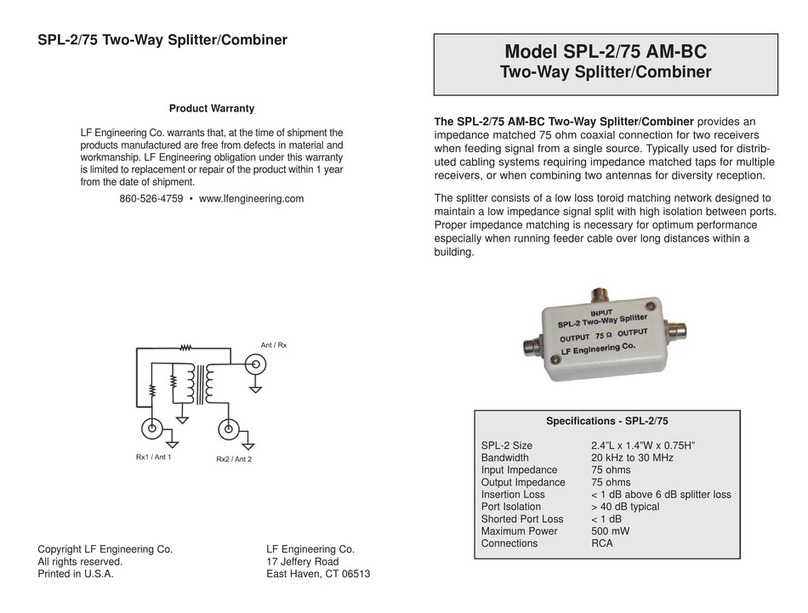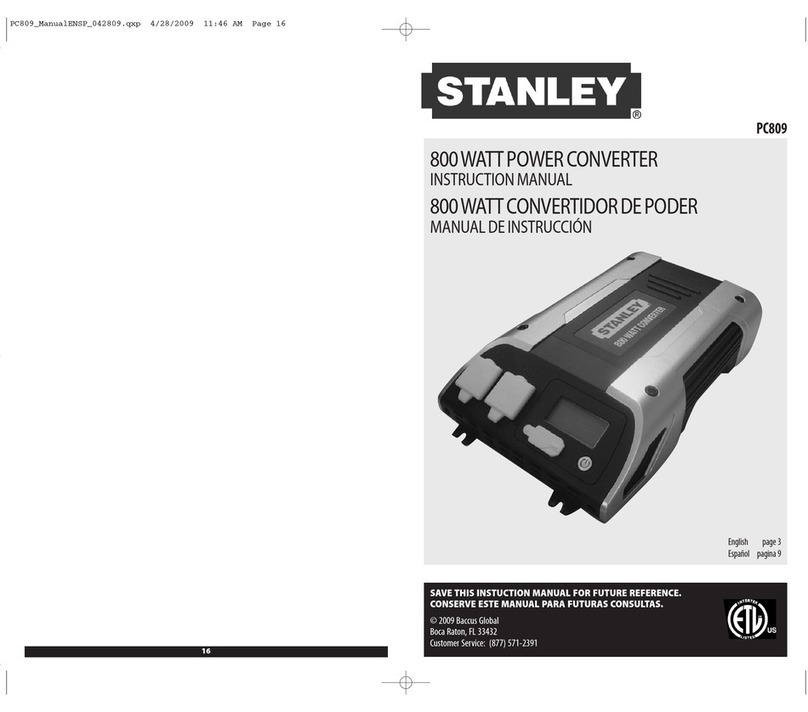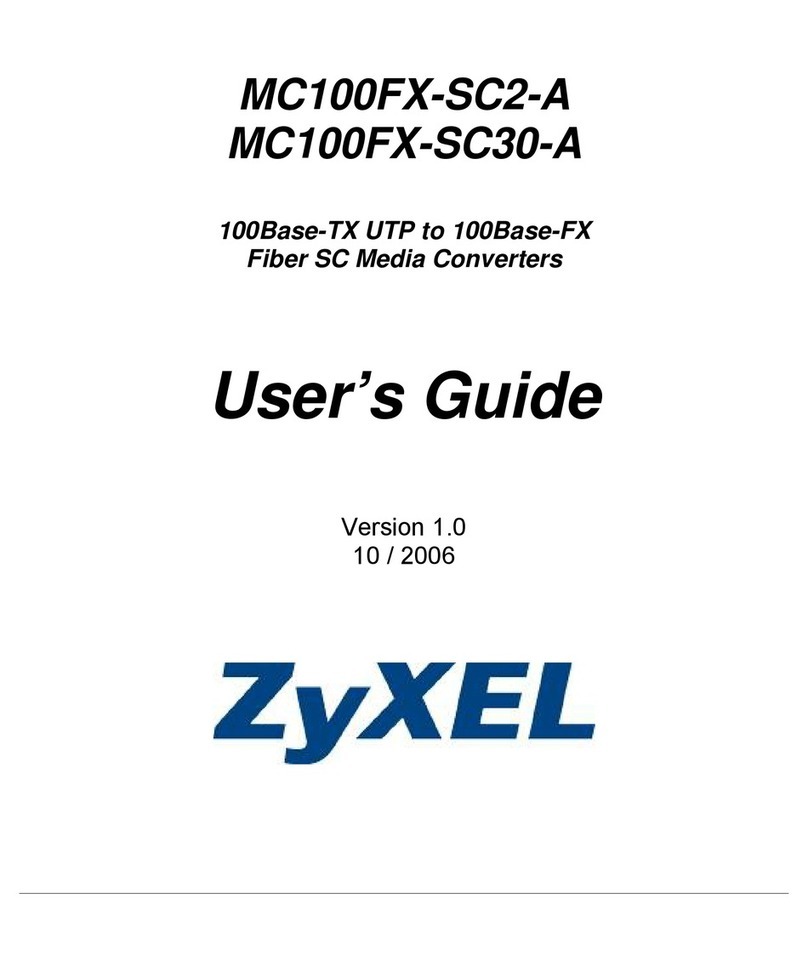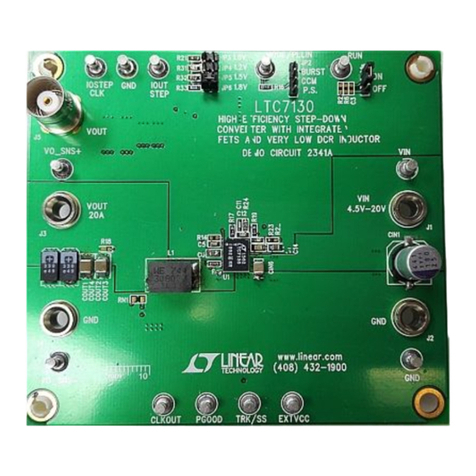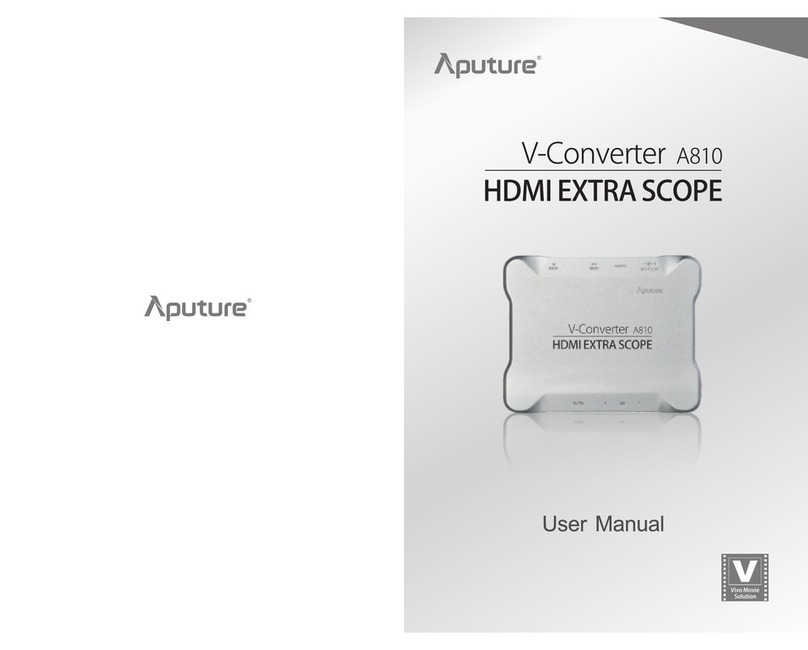GLT Multi Exchanger C-72 User manual

User Instructions
C-72
Multi Exchanger

Introduction:
Thank you for purchasing the Multi Exchanger by GLT. To optimize the
performance of this product, please read these operating instructions carefully
to familiarize yourself with the basic operations of this unit. The Multi Exchanger
is a unique DMX to Analog and MIDI to Analog converter. This unit has been
tested at the factory before being shipped to you, there is no assembly required.
Customer Support:
Warning!
To prevent or reduce the risk of electrical shock or fire, do not expose this unit
to rain or moisture.
Caution!
There are no user serviceable parts inside this unit. Do not attempt any repairs
yourself, doing so will void your manufactures warranty. In the unlikely event
your unit may require service please contact your nearest GLT dealer.
Do not discard the shipping cartoon in the trash. Please recycle when ever
possible.
Conformity:
This product complies to EN 50081-1/EN55022 pr EN55103-1 (EMC emission)
and EN 50081-1/EN 61000-4-2 pr EN 55103-2 (EMC immunity).
Multi Exchanger Instruction Manual Page 2
Features:
The Multi Exchanger is an universal signal converter that converts DMX to
Analog signal and MIDI to Analog signal. This allows you to use your analog
dimmer and power packs with a DMX controller or MIDI sequencer. This unit can
convert up to 72 DMX channels. This unit may also be used as a 72 channel
chaser. One scene can be stored in to memory as an emergency back up. This
unit has built in memory in case the unit's power is accidently disconnected.
1 2 43 56 9 10 11 12 13 147 8
POWER FUSE
MENU MIDI IN MIDI THRU DMX IN DMX INDMX OUT DMX OUT
STORE
CHASE
8 8 8 8
Signal DMX
HOLD
MIDI
F1A 250V 5x20mm
Functions & Controls (Front):
1. Power Switch - This turns the main power on and off.
2. Fuse Holder - This holds a fuse that protects the internal power supply.
3. LED Display - This is a seven segments display that indicates DMX
signal, MIDI signal, DMX Function, Hold Function, DMX channel, and
is used to activate and make changes in the menu.
4. Up Button - This button is used to advance the selected readings in
the menu.
5. Down Button - This button is used to descend through the menu
selections.
6. Menu Button - Use this button to activate the system menu.
7. Chase Button - This button selects chase mode.
8. Store Button - Pressing this button stores a scene or recalls a stored
scene.
9. MIDI In - This connector is used to receive MIDI signal from a MIDI
controller or MIDI sequencer.
10. MIDI Thru - This connector is used to send the signal coming in from
the MIDI IN JACK (9) to another MIDI device.
11. DMX In - This 3-pin XLR jack is used to receive DMX signal from a DMX
controller.
12. DMX Out - This 3-pin XLR jack is used to send a DMX signal to a DMX
power pack or dimmer.
13. DMX In - This 5-pin XLR jack is used to receive DMX signal from a DMX
controller.
14. DMX Out - This 5-pin XLR jack is used to send a DMX signal to a DMX
power pack or dimmer.
Multi Exchanger Instruction Manual Page 3
GLT will provides a customer support and service, to provide setup help and
to answer any question should you encounter problems during your setup or
initial operation. You may also visit us on the web for any comments or
suggestions or directly send e-mail to us, let us know how to better service you.

Introduction:
Thank you for purchasing the Multi Exchanger by GLT. To optimize the
performance of this product, please read these operating instructions carefully
to familiarize yourself with the basic operations of this unit. The Multi Exchanger
is a unique DMX to Analog and MIDI to Analog converter. This unit has been
tested at the factory before being shipped to you, there is no assembly required.
Customer Support:
Warning!
To prevent or reduce the risk of electrical shock or fire, do not expose this unit
to rain or moisture.
Caution!
There are no user serviceable parts inside this unit. Do not attempt any repairs
yourself, doing so will void your manufactures warranty. In the unlikely event
your unit may require service please contact your nearest GLT dealer.
Do not discard the shipping cartoon in the trash. Please recycle when ever
possible.
Conformity:
This product complies to EN 50081-1/EN55022 pr EN55103-1 (EMC emission)
and EN 50081-1/EN 61000-4-2 pr EN 55103-2 (EMC immunity).
Multi Exchanger Instruction Manual Page 2
Features:
The Multi Exchanger is an universal signal converter that converts DMX to
Analog signal and MIDI to Analog signal. This allows you to use your analog
dimmer and power packs with a DMX controller or MIDI sequencer. This unit can
convert up to 72 DMX channels. This unit may also be used as a 72 channel
chaser. One scene can be stored in to memory as an emergency back up. This
unit has built in memory in case the unit's power is accidently disconnected.
1 2 43 56 9 10 11 12 13 147 8
POWER FUSE
MENU MIDI IN MIDI THRU DMX IN DMX INDMX OUT DMX OUT
STORE
CHASE
8 8 8 8
Signal DMX
HOLD
MIDI
F1A 250V 5x20mm
Functions & Controls (Front):
1. Power Switch - This turns the main power on and off.
2. Fuse Holder - This holds a fuse that protects the internal power supply.
3. LED Display - This is a seven segments display that indicates DMX
signal, MIDI signal, DMX Function, Hold Function, DMX channel, and
is used to activate and make changes in the menu.
4. Up Button - This button is used to advance the selected readings in
the menu.
5. Down Button - This button is used to descend through the menu
selections.
6. Menu Button - Use this button to activate the system menu.
7. Chase Button - This button selects chase mode.
8. Store Button - Pressing this button stores a scene or recalls a stored
scene.
9. MIDI In - This connector is used to receive MIDI signal from a MIDI
controller or MIDI sequencer.
10. MIDI Thru - This connector is used to send the signal coming in from
the MIDI IN JACK (9) to another MIDI device.
11. DMX In - This 3-pin XLR jack is used to receive DMX signal from a DMX
controller.
12. DMX Out - This 3-pin XLR jack is used to send a DMX signal to a DMX
power pack or dimmer.
13. DMX In - This 5-pin XLR jack is used to receive DMX signal from a DMX
controller.
14. DMX Out - This 5-pin XLR jack is used to send a DMX signal to a DMX
power pack or dimmer.
Multi Exchanger Instruction Manual Page 3
GLT will provides a customer support and service, to provide setup help and
to answer any question should you encounter problems during your setup or
initial operation. You may also visit us on the web for any comments or
suggestions or directly send e-mail to us, let us know how to better service you.

1 2 3 5
46
OUTPUTS 1-24
1 24
Earth
OUTPUTS 25-48
25 48
Earth
OUTPUTS 49-72
49 72
Earth
POWER INPUT
+-
ANALOG OUTPUT
POLARITY
OUTPUT LEVEL
DIP Switch
Output
15V
12V
10V on
on
on
on
on
on
off
off
off
off
off
off
4
3
21
N'OUVREZ PAS..RISQUE DE CHOCELECTRIQUE
CAUTION
RISK OF ELECTRIC SHOCK
DO NOT OPEN
WARNING: THIS APPARATUS MUST BE EARTHED
Functions & Controls (Rear):
1. Channel 1-24 Output - This 25 pin "D" socket connector controls the output
signal for channels 1-24.
2. Channel 25-48 Output - This 25 pin "D" socket connector controls the output
signal for channels 25-48.
3. Channel 49-72 Output - This 25 pin "D" socket connector controls the output
signal for channels 49-72.
4. Output Level - 10V/ 12V/ 15V are available using these dip-switches.
Details refer to the figure.
5. Analogue Output Polarity - The left
is for positive(+) output and the right
for negative(-) output.
6. Power Input Cord - Connect this
cord to an AC 230V~50Hz electrical outlet.
Multi Exchanger Instruction Manual Page 4 Multi Exchanger Instruction Manual Page 5
Power & DMX Setup:
1. With the main power off, connect either a DMX or MIDI controller.
Data Cable (DMX Cable) Requirements:
The Multi Exchanger can be controlled via DMX-512 protocol and your DMX
controller requires a standard 3-PIN/5-PIN XLR connector for data input and
data output(Figure1). Connect the Multi Exchanger and your fixtures together
using standard 3-PIN/5-PIN DMX cables. The Multi Exchanger uses DMX-
512 protocol to operate your fixtures.
If you are constructing your own data cables, be sure to
use standard two conductor shielded cable (This cable
may be purchased at almost all professional sound and
lighting stores). Your cables should be made with a 3-pin
male and female XLR connector on either end of the
cable. Also remember that DMX lines must be daisy
chained and can't be split. Figure 1
*Note:
Be sure to follow figures two and three when making your own cables. Do not
use the ground lug on the XLR connector. Do not connect the cable's shield
conductor to the ground lug or allow the shield conductor to come in contact
with the XLR's outer casing. Grounding the shield could cause a short circuit
and erratic behavior.
*Special Note:
Figure 2
DMX 512 OUT
3-PIN XLR
DMX 512 IN
3-PIN XLR
DMX+
DMX-
Figure 3
XLR Male Socket XLR Female Socket
1 Ground 2 Cold
3 Hot 3 Hot
2 Cold 1 Ground
XLR Pin Configuration
Pin 1 = Ground
Pin 2 = Data Compliment (negative)
Pin 3 = Data True (positive)
Termination reduces signal errors and avoids signal
transmission problems and interference. It is always
advisable to connect a DMX terminal, (Resistance120
Ohm 1/4 W) between PIN 2 (DMX-) and PIN 3
(DMX +) of the last fixture.
Figure 4
1
2
3
Line Termination. When longer runs of cable are used, you may need to use
a terminator on the last unit to avoid erratic behavior. A terminator is a 120
ohm 1/4 watt resistor which is connected between pins 2 and 3 of a male
XLR connector (DATA + and DATA -). This unit is inserted in the female XLR
connector of the last unit in your daisy chain to terminate the line. Using a
cable terminator will decrease the possibilities of erratic behavior.
DMX Signal Cable. 120 ohm impedance DMX signal cable MUST be
used for signal connection.
Some manufactures use 5-pin XLR connectors for DATA transmission in
place of 3-pin. 5-pin XLR fixtures may be implemented in a 3-pin XLR DMX
line. When inserting standard 5-pin XLR connectors in to a 3-pin line a cable
adaptor must be used, these adaptors are readily available at most electric
stores. The chart below details a proper cable conversion.
3-Pin XLR to 5-Pin XLR Conversion
Conductor
Ground/Shield
Data Compliment(-signal)
Data True(+signal)
Not Used
Not Used
3-Pin XLR Female(Out)
Pin 1
Pin 2
Pin 3
5-pin XLR Male(In)
Pin 1
Pin 2
Pin 3
Pin 4 - Do Not Used
Pin 5 - Do Not Used
COMMON
5-Pin XLR DMX Connectors

1 2 3 5
46
OUTPUTS 1-24
1 24
Earth
OUTPUTS 25-48
25 48
Earth
OUTPUTS 49-72
49 72
Earth
POWER INPUT
+-
ANALOG OUTPUT
POLARITY
OUTPUT LEVEL
DIP Switch
Output
15V
12V
10V on
on
on
on
on
on
off
off
off
off
off
off
4
3
21
N'OUVREZ PAS..RISQUE DE CHOCELECTRIQUE
CAUTION
RISK OF ELECTRIC SHOCK
DO NOT OPEN
WARNING: THIS APPARATUS MUST BE EARTHED
Functions & Controls (Rear):
1. Channel 1-24 Output - This 25 pin "D" socket connector controls the output
signal for channels 1-24.
2. Channel 25-48 Output - This 25 pin "D" socket connector controls the output
signal for channels 25-48.
3. Channel 49-72 Output - This 25 pin "D" socket connector controls the output
signal for channels 49-72.
4. Output Level - 10V/ 12V/ 15V are available using these dip-switches.
Details refer to the figure.
5. Analogue Output Polarity - The left
is for positive(+) output and the right
for negative(-) output.
6. Power Input Cord - Connect this
cord to an AC 230V~50Hz electrical outlet.
Multi Exchanger Instruction Manual Page 4 Multi Exchanger Instruction Manual Page 5
Power & DMX Setup:
1. With the main power off, connect either a DMX or MIDI controller.
Data Cable (DMX Cable) Requirements:
The Multi Exchanger can be controlled via DMX-512 protocol and your DMX
controller requires a standard 3-PIN/5-PIN XLR connector for data input and
data output(Figure1). Connect the Multi Exchanger and your fixtures together
using standard 3-PIN/5-PIN DMX cables. The Multi Exchanger uses DMX-
512 protocol to operate your fixtures.
If you are constructing your own data cables, be sure to
use standard two conductor shielded cable (This cable
may be purchased at almost all professional sound and
lighting stores). Your cables should be made with a 3-pin
male and female XLR connector on either end of the
cable. Also remember that DMX lines must be daisy
chained and can't be split. Figure 1
*Note:
Be sure to follow figures two and three when making your own cables. Do not
use the ground lug on the XLR connector. Do not connect the cable's shield
conductor to the ground lug or allow the shield conductor to come in contact
with the XLR's outer casing. Grounding the shield could cause a short circuit
and erratic behavior.
*Special Note:
Figure 2
DMX 512 OUT
3-PIN XLR
DMX 512 IN
3-PIN XLR
DMX+
DMX-
Figure 3
XLR Male Socket XLR Female Socket
1 Ground 2 Cold
3 Hot 3 Hot
2 Cold 1 Ground
XLR Pin Configuration
Pin 1 = Ground
Pin 2 = Data Compliment (negative)
Pin 3 = Data True (positive)
Termination reduces signal errors and avoids signal
transmission problems and interference. It is always
advisable to connect a DMX terminal, (Resistance120
Ohm 1/4 W) between PIN 2 (DMX-) and PIN 3
(DMX +) of the last fixture.
Figure 4
1
2
3
Line Termination. When longer runs of cable are used, you may need to use
a terminator on the last unit to avoid erratic behavior. A terminator is a 120
ohm 1/4 watt resistor which is connected between pins 2 and 3 of a male
XLR connector (DATA + and DATA -). This unit is inserted in the female XLR
connector of the last unit in your daisy chain to terminate the line. Using a
cable terminator will decrease the possibilities of erratic behavior.
DMX Signal Cable. 120 ohm impedance DMX signal cable MUST be
used for signal connection.
Some manufactures use 5-pin XLR connectors for DATA transmission in
place of 3-pin. 5-pin XLR fixtures may be implemented in a 3-pin XLR DMX
line. When inserting standard 5-pin XLR connectors in to a 3-pin line a cable
adaptor must be used, these adaptors are readily available at most electric
stores. The chart below details a proper cable conversion.
3-Pin XLR to 5-Pin XLR Conversion
Conductor
Ground/Shield
Data Compliment(-signal)
Data True(+signal)
Not Used
Not Used
3-Pin XLR Female(Out)
Pin 1
Pin 2
Pin 3
5-pin XLR Male(In)
Pin 1
Pin 2
Pin 3
Pin 4 - Do Not Used
Pin 5 - Do Not Used
COMMON
5-Pin XLR DMX Connectors

Multi Exchanger Instruction Manual Page 6 Multi Exchanger Instruction Manual Page 7
Speed Settings:
This setting adjusts the speed of the internal chase. The number of channels
in a chase can be adjusted between 1-72 channels. This chase can not be
edited. To change the chase speed:
1. Press and hold down the MENU Button for three seconds.
2. When the LED Display begins to flash, tap the MENU Button three times
to activate the SPEED settings. This will be indicated by SPXX flashing in
the LED Display.
3. Use the UP and DOWN Buttons to select your desired chase speed. The
speed can be adjusted from 01 to 99. A setting of 01 is the fastest chase
speed at 1/10 of a second. A setting of 99 is the slowest chase speed at
every 10 seconds.
4. When you have made your selection, tap the MENU Button twice to exit
this function and confirm your setting.
Channel Setting:
This setting allows you to change the starting DMX signal that will trigger the
controller. To change this setting:
1. Press and hold down the MENU Button for three seconds.
2. When the LED Display begins to flash, be sure the DMX LED on the left
of LED Display is flashing. If it is not flashing, use the UP and DOWN
Buttons to select DMX mode.
3. When you are in DMX mode, tap the MENU Button once to activate the
DMX settings. This will be indicated by AXXX flashing in the LED Display.
4. Use UP and DOWN Buttons to select your desired DMX address. The
address can be changed from 001 to 512.
5. When you have made your selection, tap the MENU Button four times to
exit this function and confirm your setting.
Programming a BACK-UP Scene:
This functions allows you to program one scene in to the data pack's memory.
This scene can be recalled at any time. To program a scene:
1. With any DMX controller, program a scene using any of the available 72
channels..
2. Press and hold down the STORE Button for five seconds until "GOOD"
is displayed in the LED Display.
3. To recall this scene press the STORE Button at any time. "STOR" will be
displayed in the LED Display indicating that the unit is running the stored
scene.
Operating Instructions:
Mode Select:
To access the menu you must hold down the MENU Button for at least three
seconds. While in the MODE Setting, use the UP and DOWN Buttons to sel-
ect DMX or MIDI mode. If a DMX or MIDI signal is present, the corresponding
LED will begin to flash in the LED Display. After you choose either DMX or
MIDI, press the MENU Button to activate your choice.
DMX Mode :
When the unit is receiving a DMX signal, the DMX LED will begin flashing in
the LED Display indicating a DMX signal is present. The unit will display the
DMX address in the LED Display. This unit can operate on DMX channels 1-
512 (A001 - A512). You can use the UP and DOWN Buttons to select a start-
ing DMX channel. This unit uses a total of 72 DMX channels.
MIDI Mode :
When the unit is receiving a MIDI signal, the MIDI LED will begin flashing in
the LED Display indicating a MIDI signal is present. The unit will also display
a flashing MIDI channel number (CH01 - Ch16) in the LED Display. This unit
can operate on MIDI channel 1-16. You may use the UP and DOWN Buttons
to select a starting MIDI channel number.
Hold Mode :
This model allows you to hold the last DMX setting if the DMX signal is inter-
rupted. For example if hold function is off and you have channels 1 & 4 on and
your DMX controller is turned off, DMX channels 1 & 4 will also turn off. If you
turn the HOLD function on and disconnect DMX signal, channels 1 & 4 will re-
main om until you disconnect the Multi Exchanger 's power or reconnect a
DMX controller. To turn this function ON and OFF:
1. Press and hold down the MENU Button for three seconds.
2. When the LED begins to flash, tap the MENU Button twice to activate the
HOLD settings, this will be indicated by a flashing LED next to "HOLD" in
the LED Display.
3. Use the UP and DOWN Buttons to select the On and Off settings.
4. When you have made your selection, tap the MENU Button three times to
exit this function and confirm your setting.
2. Connect your output connections to the "D" sockets on the rear of theunit.
3. Use the appropriate device to convert output connector to din plugs.
4. After you have made all your connections, turn the main power on and
follow the operating instructions.

Multi Exchanger Instruction Manual Page 6 Multi Exchanger Instruction Manual Page 7
Speed Settings:
This setting adjusts the speed of the internal chase. The number of channels
in a chase can be adjusted between 1-72 channels. This chase can not be
edited. To change the chase speed:
1. Press and hold down the MENU Button for three seconds.
2. When the LED Display begins to flash, tap the MENU Button three times
to activate the SPEED settings. This will be indicated by SPXX flashing in
the LED Display.
3. Use the UP and DOWN Buttons to select your desired chase speed. The
speed can be adjusted from 01 to 99. A setting of 01 is the fastest chase
speed at 1/10 of a second. A setting of 99 is the slowest chase speed at
every 10 seconds.
4. When you have made your selection, tap the MENU Button twice to exit
this function and confirm your setting.
Channel Setting:
This setting allows you to change the starting DMX signal that will trigger the
controller. To change this setting:
1. Press and hold down the MENU Button for three seconds.
2. When the LED Display begins to flash, be sure the DMX LED on the left
of LED Display is flashing. If it is not flashing, use the UP and DOWN
Buttons to select DMX mode.
3. When you are in DMX mode, tap the MENU Button once to activate the
DMX settings. This will be indicated by AXXX flashing in the LED Display.
4. Use UP and DOWN Buttons to select your desired DMX address. The
address can be changed from 001 to 512.
5. When you have made your selection, tap the MENU Button four times to
exit this function and confirm your setting.
Programming a BACK-UP Scene:
This functions allows you to program one scene in to the data pack's memory.
This scene can be recalled at any time. To program a scene:
1. With any DMX controller, program a scene using any of the available 72
channels..
2. Press and hold down the STORE Button for five seconds until "GOOD"
is displayed in the LED Display.
3. To recall this scene press the STORE Button at any time. "STOR" will be
displayed in the LED Display indicating that the unit is running the stored
scene.
Operating Instructions:
Mode Select:
To access the menu you must hold down the MENU Button for at least three
seconds. While in the MODE Setting, use the UP and DOWN Buttons to sel-
ect DMX or MIDI mode. If a DMX or MIDI signal is present, the corresponding
LED will begin to flash in the LED Display. After you choose either DMX or
MIDI, press the MENU Button to activate your choice.
DMX Mode :
When the unit is receiving a DMX signal, the DMX LED will begin flashing in
the LED Display indicating a DMX signal is present. The unit will display the
DMX address in the LED Display. This unit can operate on DMX channels 1-
512 (A001 - A512). You can use the UP and DOWN Buttons to select a start-
ing DMX channel. This unit uses a total of 72 DMX channels.
MIDI Mode :
When the unit is receiving a MIDI signal, the MIDI LED will begin flashing in
the LED Display indicating a MIDI signal is present. The unit will also display
a flashing MIDI channel number (CH01 - Ch16) in the LED Display. This unit
can operate on MIDI channel 1-16. You may use the UP and DOWN Buttons
to select a starting MIDI channel number.
Hold Mode :
This model allows you to hold the last DMX setting if the DMX signal is inter-
rupted. For example if hold function is off and you have channels 1 & 4 on and
your DMX controller is turned off, DMX channels 1 & 4 will also turn off. If you
turn the HOLD function on and disconnect DMX signal, channels 1 & 4 will re-
main om until you disconnect the Multi Exchanger 's power or reconnect a
DMX controller. To turn this function ON and OFF:
1. Press and hold down the MENU Button for three seconds.
2. When the LED begins to flash, tap the MENU Button twice to activate the
HOLD settings, this will be indicated by a flashing LED next to "HOLD" in
the LED Display.
3. Use the UP and DOWN Buttons to select the On and Off settings.
4. When you have made your selection, tap the MENU Button three times to
exit this function and confirm your setting.
2. Connect your output connections to the "D" sockets on the rear of theunit.
3. Use the appropriate device to convert output connector to din plugs.
4. After you have made all your connections, turn the main power on and
follow the operating instructions.

Chase Mode:
To activate the unit's chase function, press the CHASE Button, "CHAS" will
be displayed in the LED Display indicating chase mode has been activated.
The unit will run a 72 channel chase until the function is turned off.
Changing the output signal level:
The unit is capable of sending an analog output signal of +(-)10, +(-)12, +(-)15
volts. Determine what voltage your pack requires and change the output volt-
age if necessary. The unit's default output is +10 volts. To change the output
level:
1. For 10 volts flip dip switches 1 and 4 to the on position.
2. For 12 volts flip dip switches 1 and 3 to the on position.
3. For 15 volts flip dip switches 1 and 2 to the on position.
Specifications:
Power Input: AC230V~50Hz, 1A
Fuse: F1A 250V 5x20mm
DMX to Analog: Maximum of 72 channels
Analog Output: +(-)10V/ +(-)12V/ +(-)15V
Dimensions: 483x125x44mm(19"x5"x1.75")
Weight: 1.3 Kg/ 2.5 Lbs
*Please Note: Specifications and improvements in the design of this unit and
this manual are subject to change without any prior written notice.
Multi Exchanger Instruction Manual Page 8

Table of contents
Other GLT Media Converter manuals
